Although the Amiens cathedral is its main attraction, the Hortillonnages should be on your “to see” list. Hortillonnages is a fancy word for floating gardens, and as gardens go, this one is enormous. Even if flowers and gardens are not your thing, this could interest you.
The Hortillonnages cover a vast area of 300 hectares (741 acres) towards the North of Amiens. The area are, or used to be, marshes, fed by the Somme river.

If you think you need to go far to reach the former marshes, you’d be very wrong:
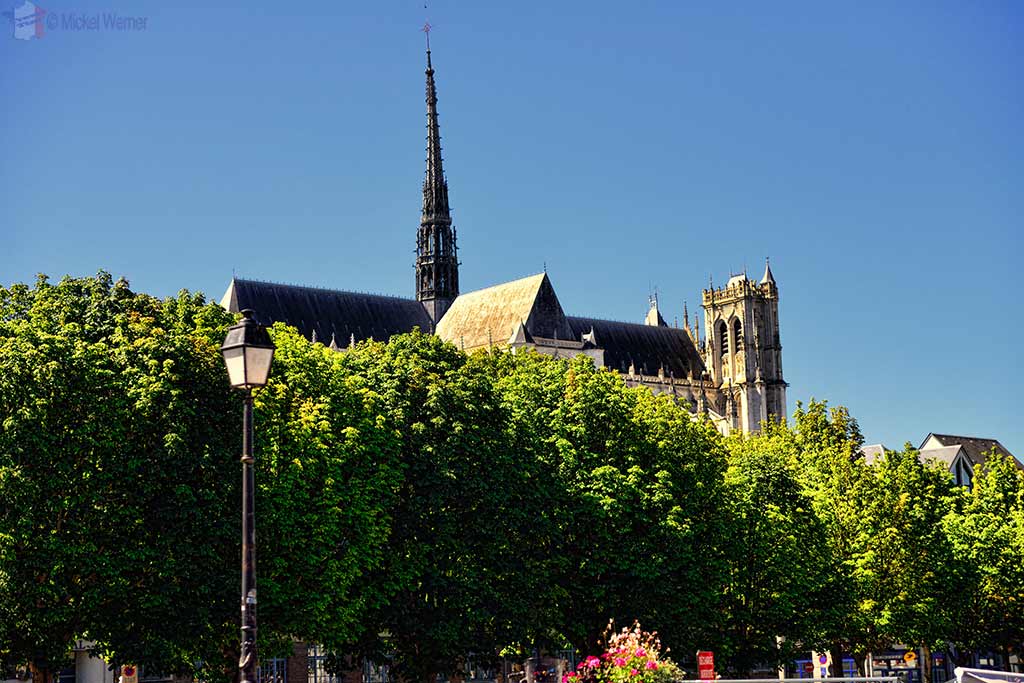
The start of the Hortillonnages is just behind the cathedral of Amiens, a 5 minute walk.
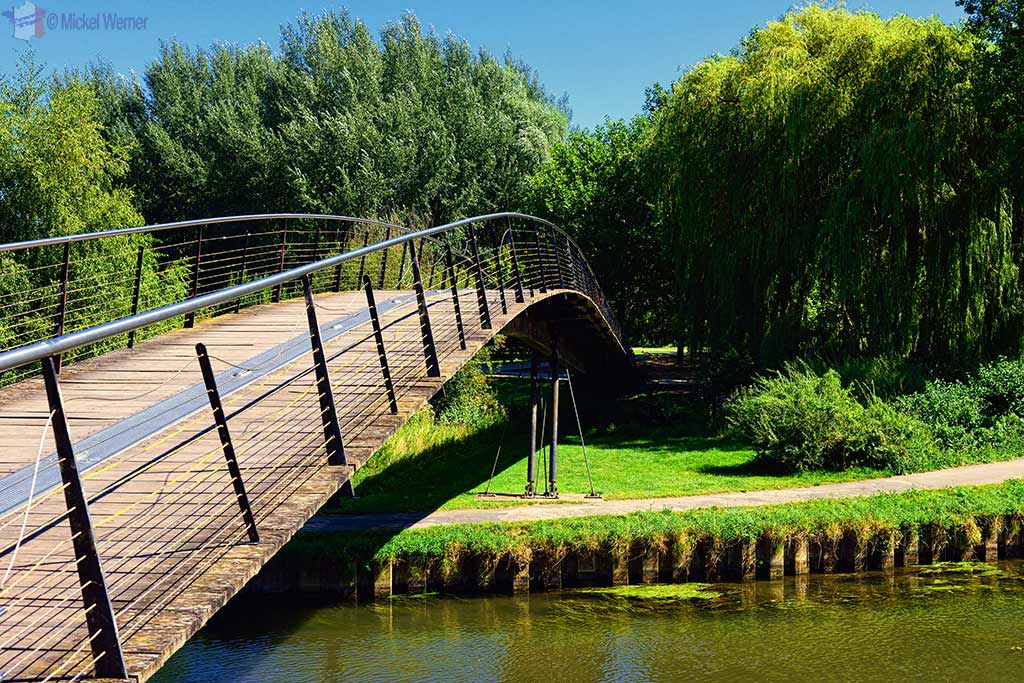
The area is intersected by a road and bridge. To the left of the bridge (no, not the one above) is a park called “Parc Saint Pierre“, including a lake, sports fields and picnic areas. The actual Hortillonnages start at the right of the bridge.
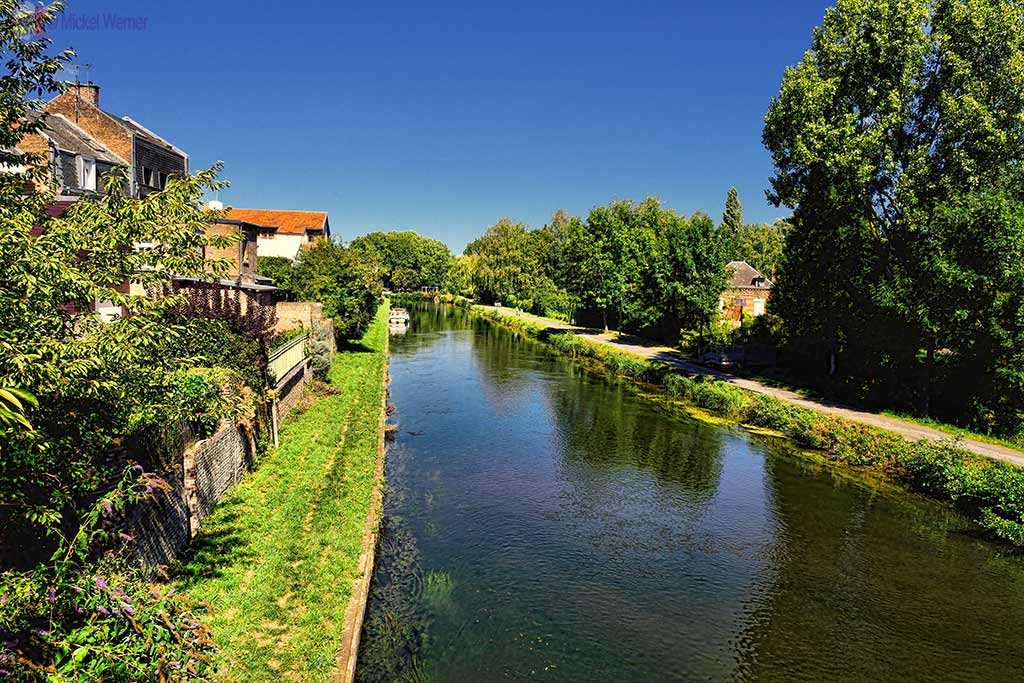
There are 65 kilometres (40 miles) of canals and rivers in this area. In the fields of the Parc Saint Pierre you will stumble upon a surreal scene:
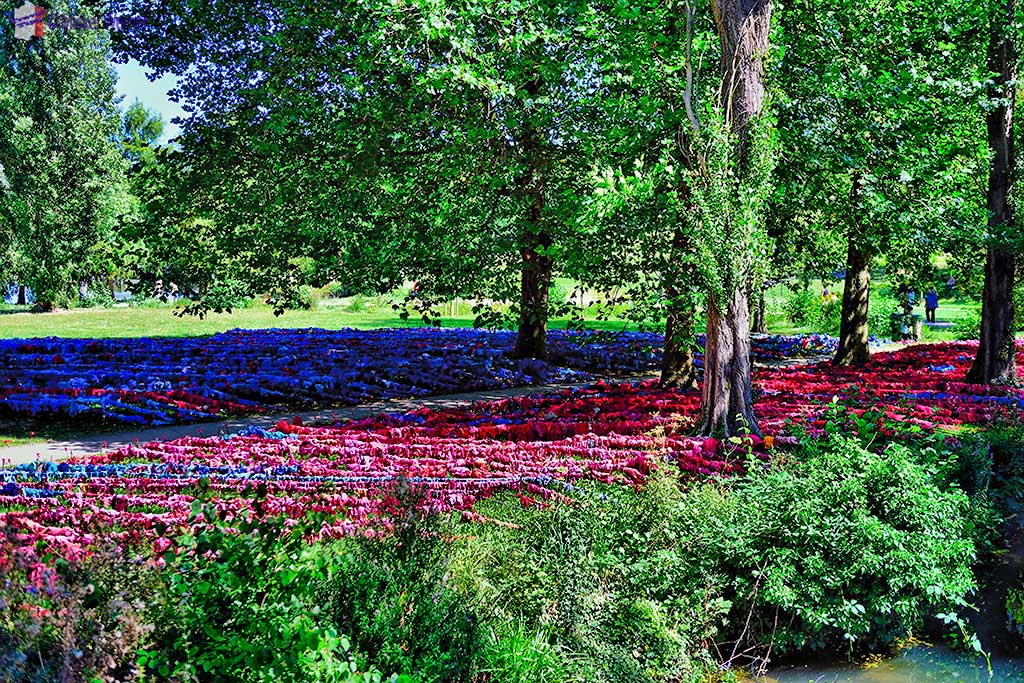
You get to see strange coloured, red and blue, “flowers. On closer inspection:

… they turn out to be red and blue clothes. It is the Champs de Paix (Peace Field). Anyone can place red or blue clothing and then make a wish. The field is linked to the World War I, where at the end the English had their red poppies, while the French had their blue cornflower.
On the other side of the bridge, away from the park, you start seeing the first gardens:

The area is full of (private) garden plots with their “sheds”.

Water can be found everywhere, with very small canals and river streams. The “sheds” are anything but sheds; over the years they have grown to be full houses.
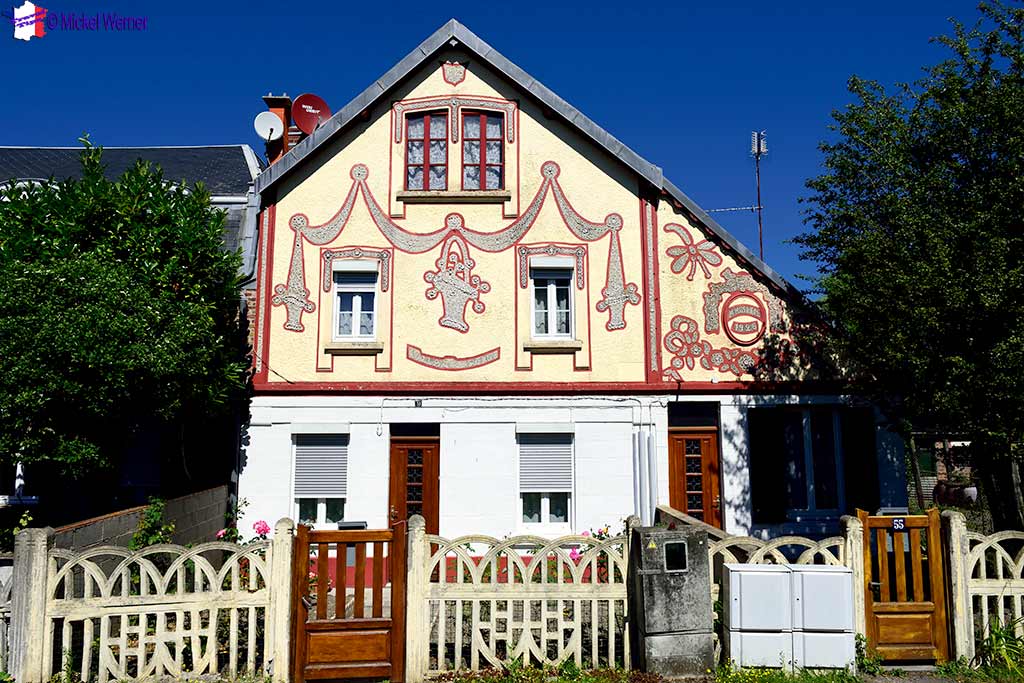
This house was made in 1926. The area is steeped in history since the marshes were already cultivated during the Roman period, 2000 years ago. At the time there were 10,000 hectares (24710 acres) of marshes that were turned into market gardens, places where people would grow food to sell.
It is possible to walk alongside the river and main canals and see some of these amazing gardens and houses, but the real fun in deep inside the marshes. For that you need to take a boat. There is a place where you can rent kayaks and do it yourself, but considering the enormous big area and the 100’s of small canals you’ll get lost.
During the summer months you can take a boat tour organised by the Association for the Protection of the Hortillonnages. But….
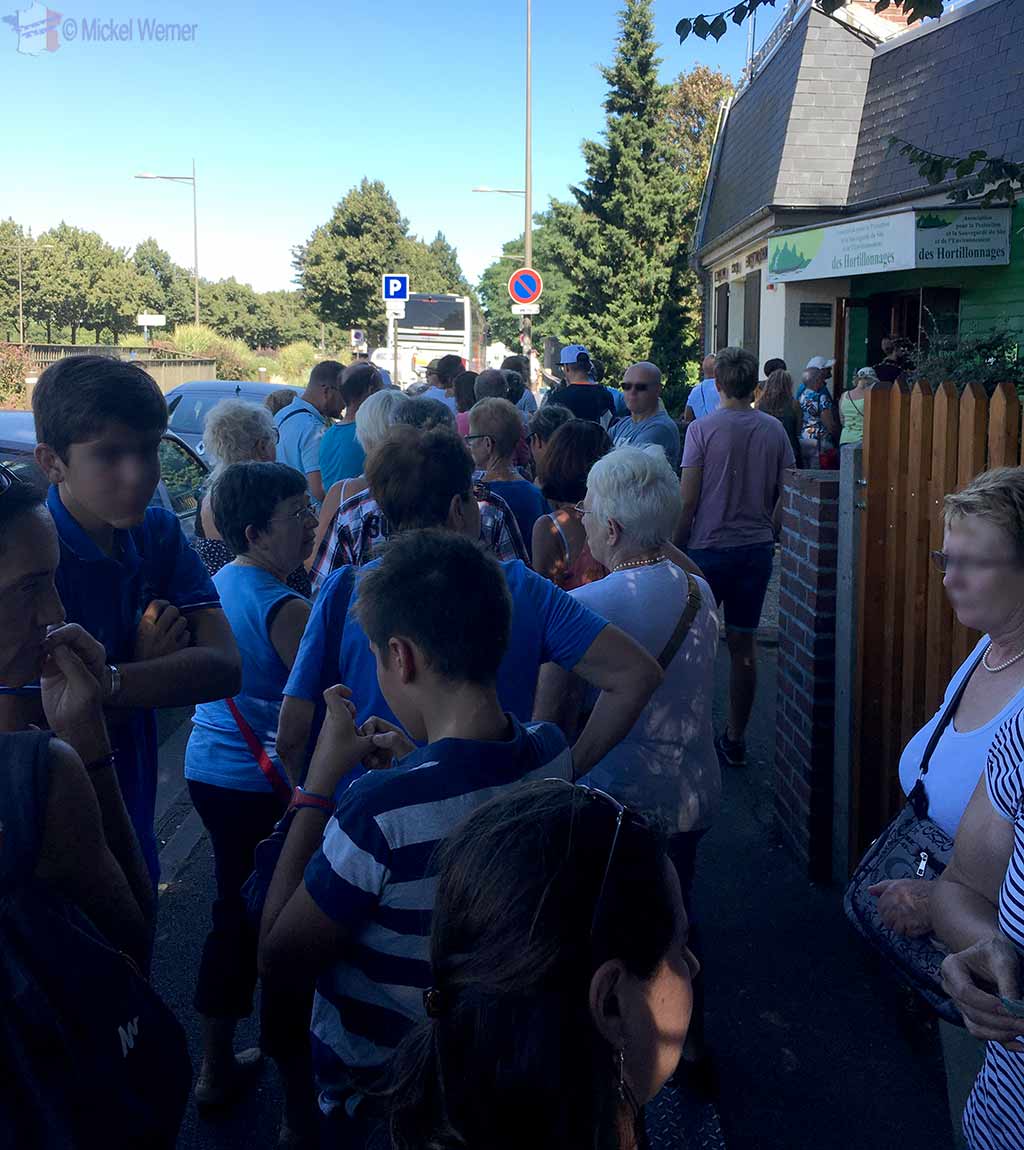
During the morning the tours are for the buses, while in the afternoon you get to queue up for quite some time, it’s a slow process.
TIP: If you are going to take a boat tour, come real early in the afternoon when they just open (at 13:30). You will not have to wait so long.

That is because they fill up the few boats with people, calling out numbers issued at the reception. A boat tour takes 45 minutes, so when all boats have left, you need to wait until the next one arrives. All-in-all, if you arrive after 2 PM, count on about 3 hours waiting (including the tour itself).
But it’s worth it.
TIP: The entry point of the boat tour is right next to the bridge that divides the park from the marshes.

The boats are very silent and hold about 12 people. The boat “driver” explains the history and what you are looking at, but it’s all in French.
Here is a small video I made of some parts of the boat tour. I’ve removed the audio since there was a lot of chatter…
The tour takes you through a part of the marshes:

All the little islands are linked together by bridges, some robust and decorated, some just planks of wood.
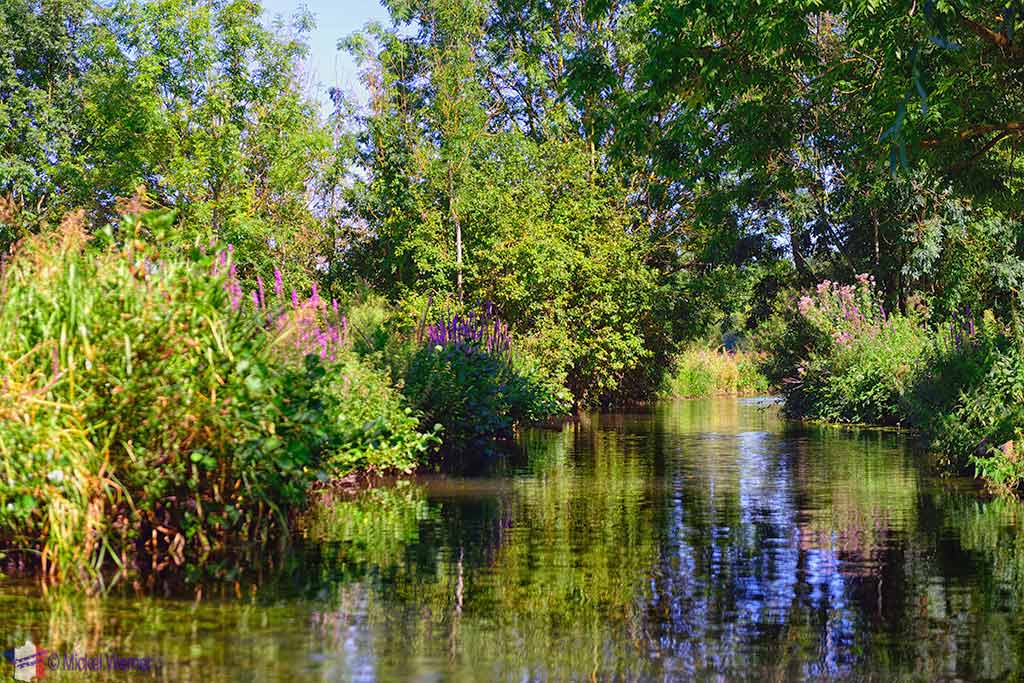
Some of the areas are still wild and have not been cultivated.

The association struggles every year to make sure the water does not erode the small plots of land, so they have strict rules and regulations. Also, no pesticides are allowed to be used.
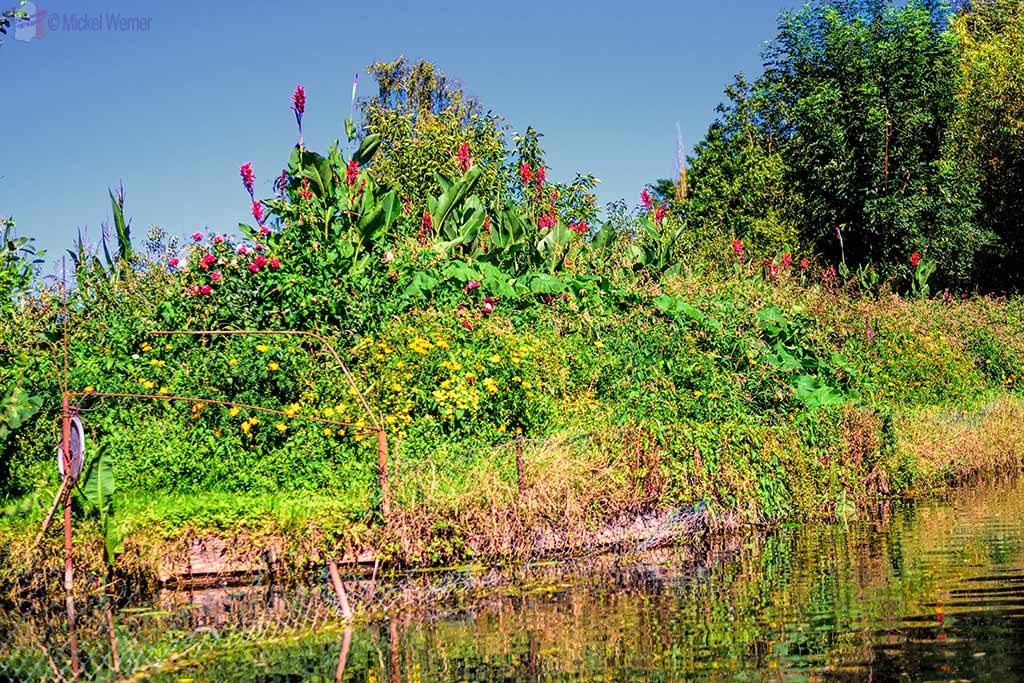
Most of the canals and small rivers are private and you can not navigate into them. They have been cordoned off with metal wires and signs.

Considering that there is no electricity nor running water, and you can not access the islands with trucks or cars, it’s amazing how the simple huts have evolved into big structures.
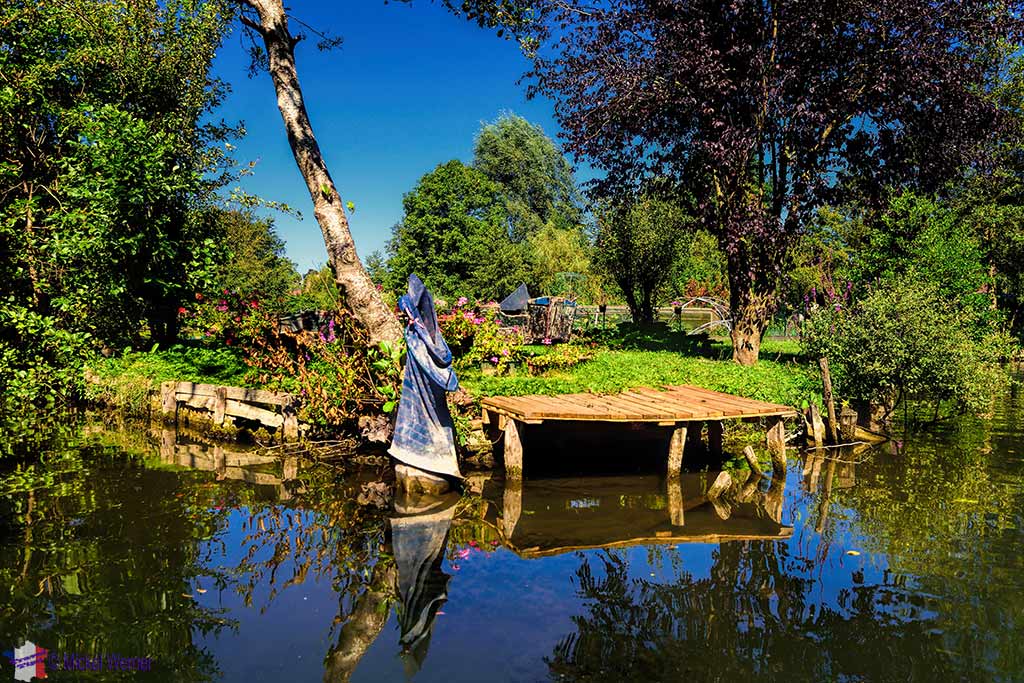
Most owners (the owners hand down the properties from generation to generation) have decorated the place, including many with life size statues/puppets.

An annual flower competition has the plot owners trying to outdo each other with their flowers.

There is even one place that can be rented as a “gite“.

You’d expect to hear a banjo player playing suddenly when you turn one of the corners… eerie.

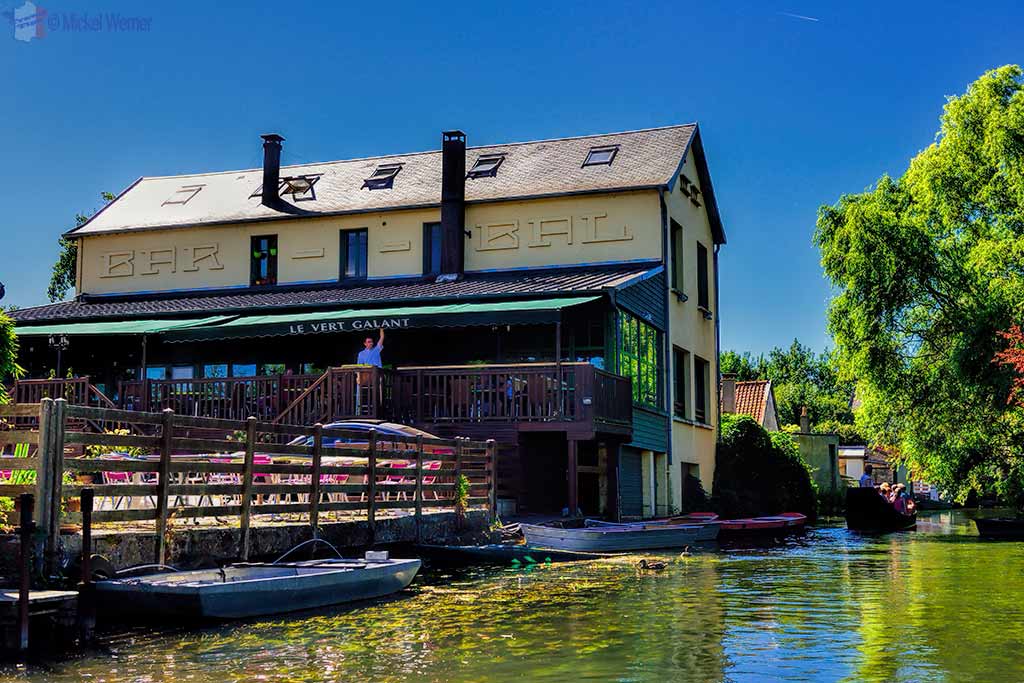
Along the ride we come along a restaurant (which can be accessed by the main road). Here you can hire boats that you paddle yourself. In the front you see another of the tour’s boats.

Here you can see again how close you are to the city: the Perret Tower.
Summary
This is an afternoon well spent. Obviously you’ll want to do this in the sun, not when it’s bad weather and raining. It’s quite a tour seeing some beautiful gardens and marshes, even if you’re not into gardens.
